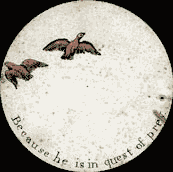Contextual references English Plus Film
In week 1 & 2 we we be exploring video and animation techniques in a fine art context.
Below are some examples of animations film and video art I would like you to think about as you begin create your own video or animations.
Look at early forms of animation like Eadweard Muybridge below, our visit to Watch Me Move: The Animation Show - Barbican Art Gallery will be a great opportunity to see lots of different types of animation. Think about the connections between the Muybridge Animations and current techniques like those used in the Matrix see - What is Bullet Time?
By Photos made by Eadweard Muybridge Animation 1878 by User Waugsberg [Public domain], via Wikimedia Commons. Photographs of humans and animals in motion – human locomotion and animal locomotion, Eadweard Muybridge animations of fast motion were achieved using a series of 12 stereoscopic cameras with trip wires.
Animation timeline
From as early as cave paintings you can see the visualisation of movement using sequences of drawings. Early devises of animation, Flip books and machines for viewing animations such as Kinetograph.
Zoetrope -  This work is licensed under a Creative Commons Attribution-ShareAlike 2.0 Generic License.Photograph by Andrew Dunn
This work is licensed under a Creative Commons Attribution-ShareAlike 2.0 Generic License.Photograph by Andrew Dunn
Taumatropio – Two discs in rotation - see image below Need help with this pronunciation (http://www.howjsay.com/index.php?word=thaumatrope)
Early pioneers -
Eadweard Muybridge - animations of fast motion were achieved using a series of 12 stereoscopic cameras with trip wires. Photographs of humans and animals in motion – human locomotion and animal locomotion.
Étienne-Jules Marey - different system of cameras - 12 consecutive frames a second, with all the frames recorded on the same picture - Image http://commons.wikimedia.org/wiki/File:Flatternder_Reiher_1886.jpg also see Thomas Eakins for human movement.
The Kinetoscope is an early motion picture exhibition device. Though not a movie projector—it was designed for films to be viewed individually through the window of a cabinet housing its components—the Kinetoscope introduced the basic approach that would become the standard for all cinematic projection before the advent of video:http://en.wikipedia.org/wiki/Kinetoscope
See also:
Georges Méliès - A Trip to the Moon / Le Voyage dans la lune - 1902 - http://www.youtube.com/watch?v=7JDaOOw0MEE
Stuart Blackton - Humorous phases of funny faces 1906 - http://www.youtube.com/watch?v=wGh6maN4l2I
Emile Cohl - Fantasmagorie 1908
Winsor Mccay - 1911-Little Nemo - Early colour animation - http://www.youtube.com/watch?v=seOGEwx0NfQ
All above traditional cell animation
See This section surveys the main animation techniques, briefly describing them and giving some background to explain the role they have played in the history of filmmaking at the NFB. - National Film Board of Canada - http://www3.nfb.ca/animation/objanim/en/techniques/index.php
One of my Favorite films from the animation show, Zbigniew Rybczynski, Tango, 1980:
And this by Norman Mclaren - Neighbours 1952
Other notable films that stood out for me are: Lumiere Brothers Sepertine Dance (11) 1897 - 99
Nathalie Djurberg
Putting down the prey 2008
Jiri Trnka - The hand 1965
Harun Farocki
Serious Games 111 - Immersion 2009
Martin Arnold - Alone life wates Hardy 1998
Ryan Trecartin
Tommy - Chat just emailed me - 2006

This Work, Contextual references English Plus Film, by 3rd party OER resources is licensed under a Creative Commons Attribution-NonCommercial-ShareAlike 3.0 Unported license.





